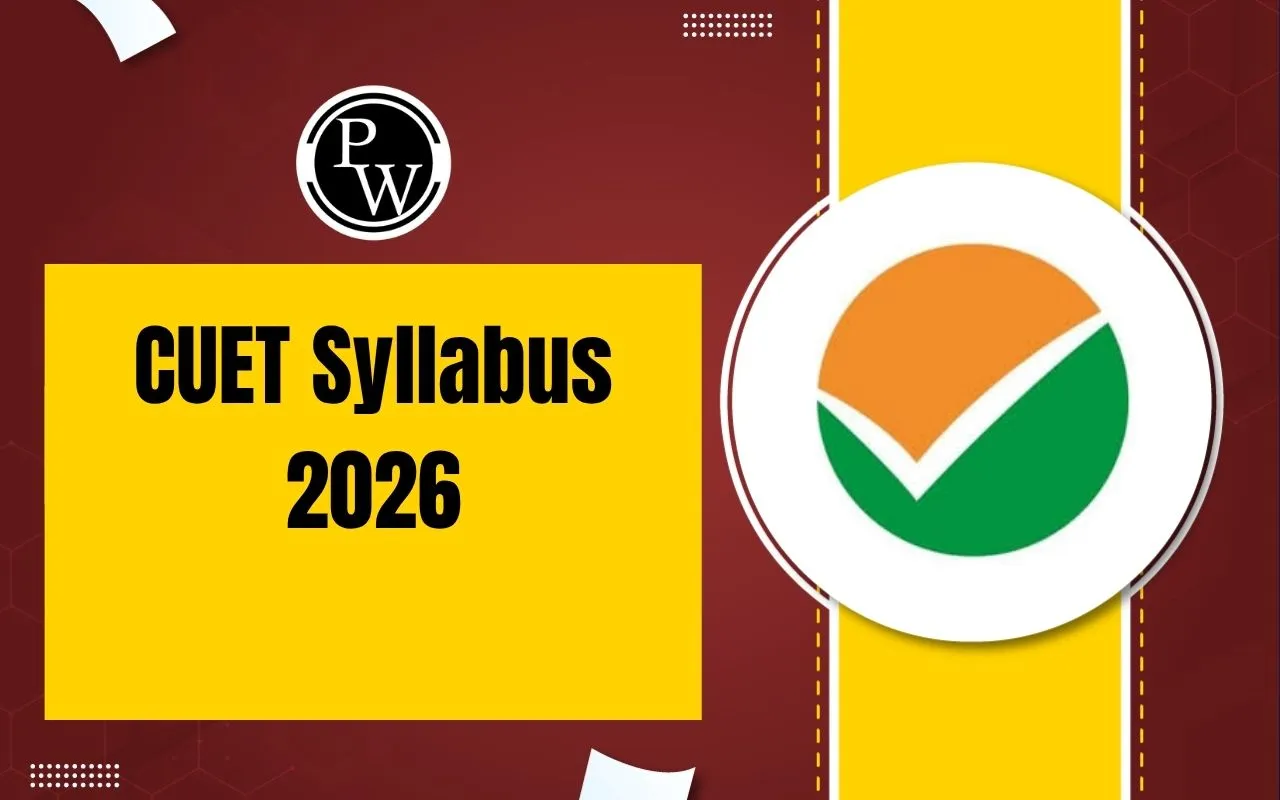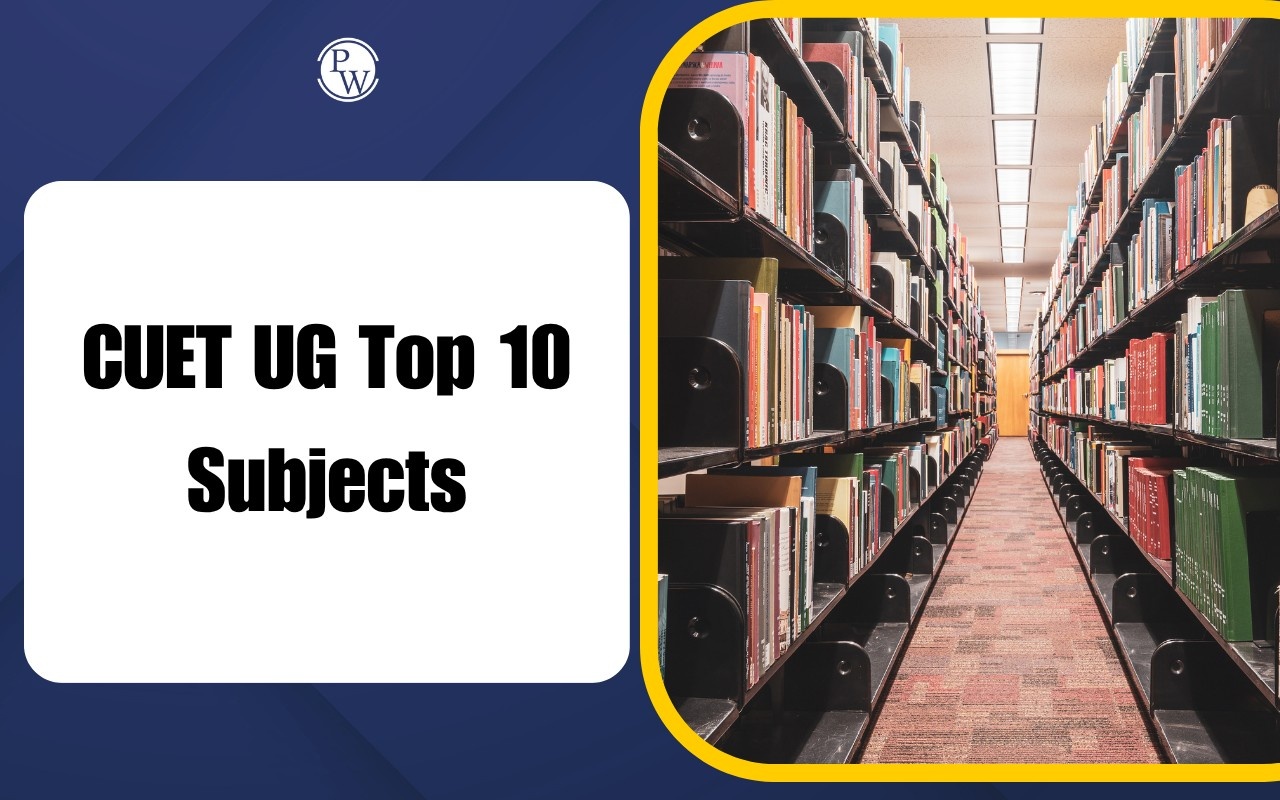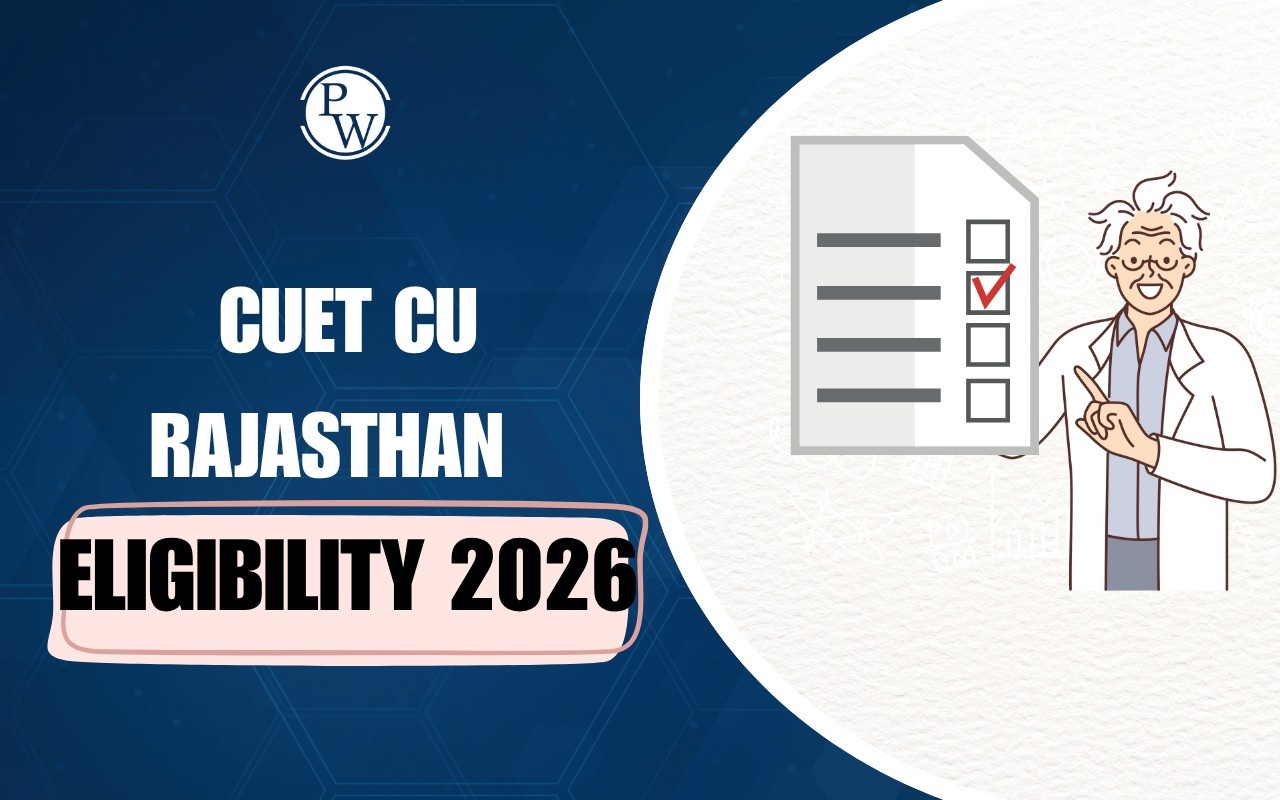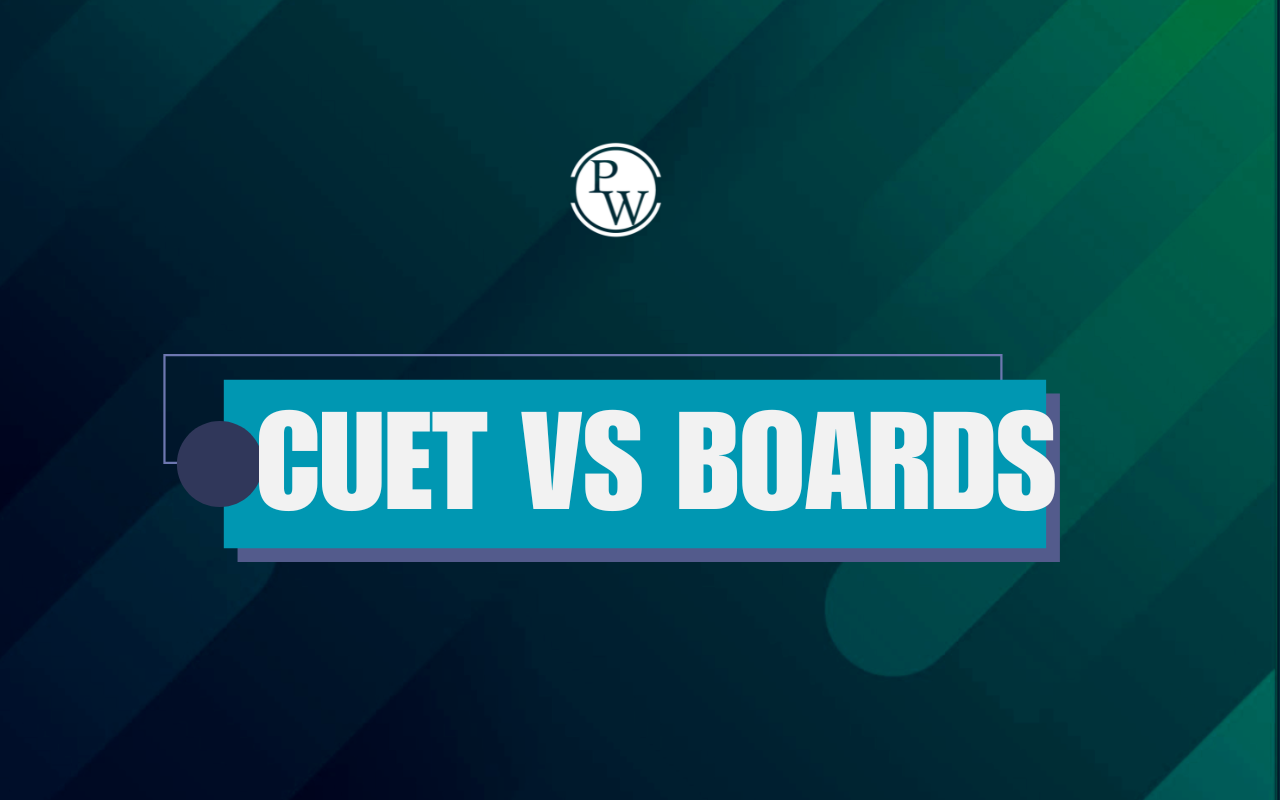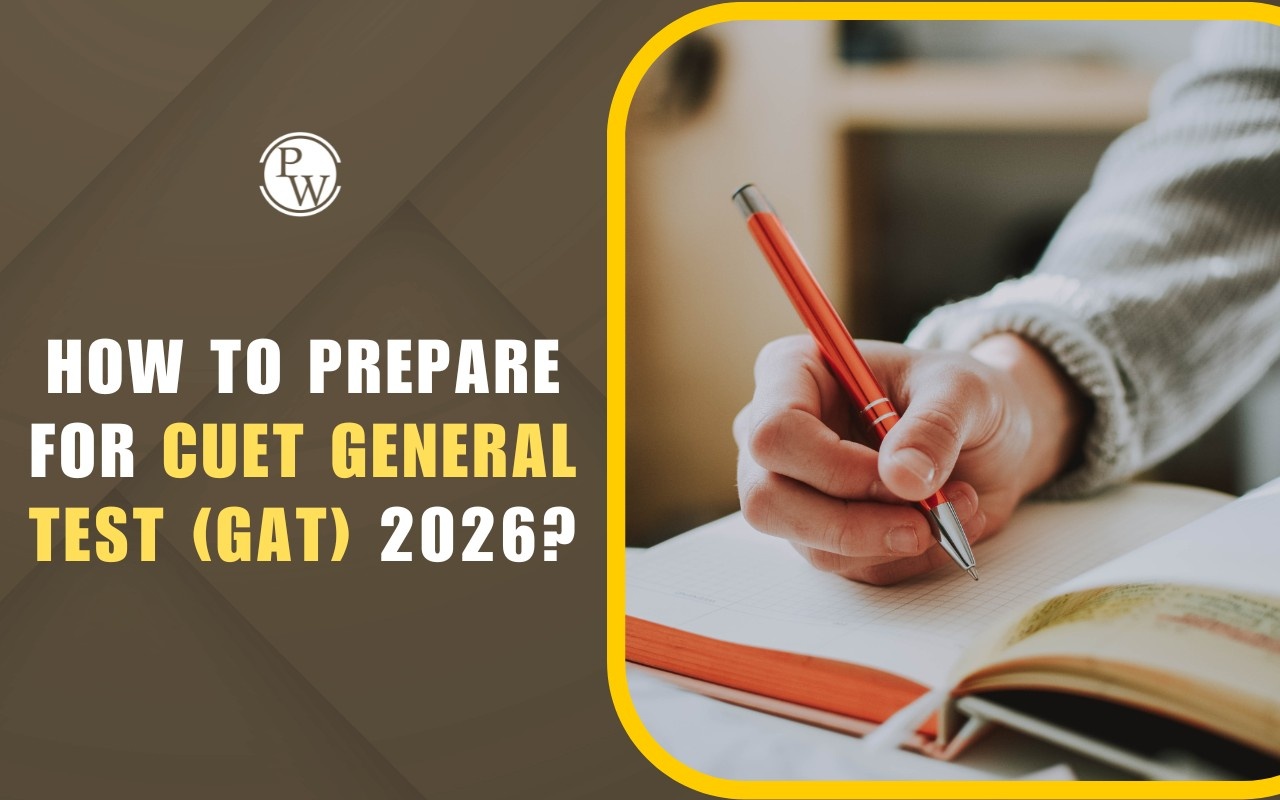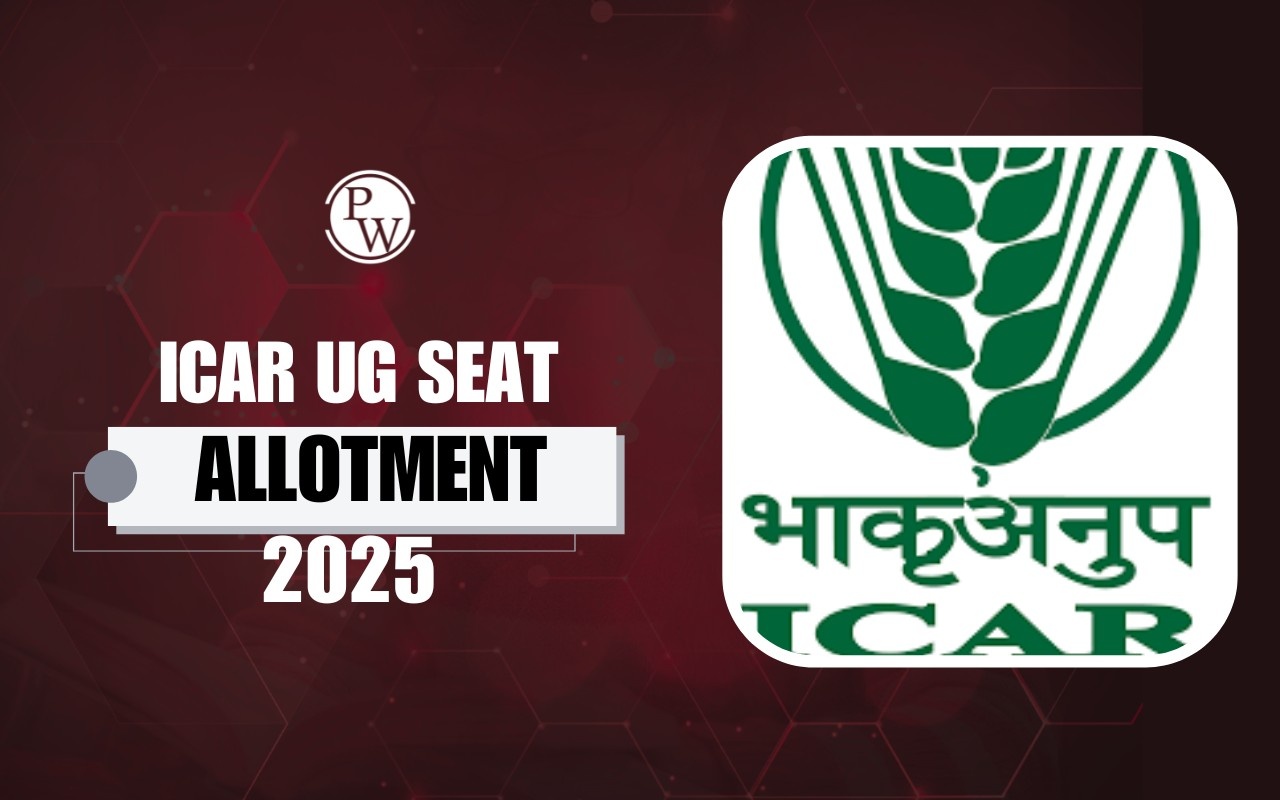
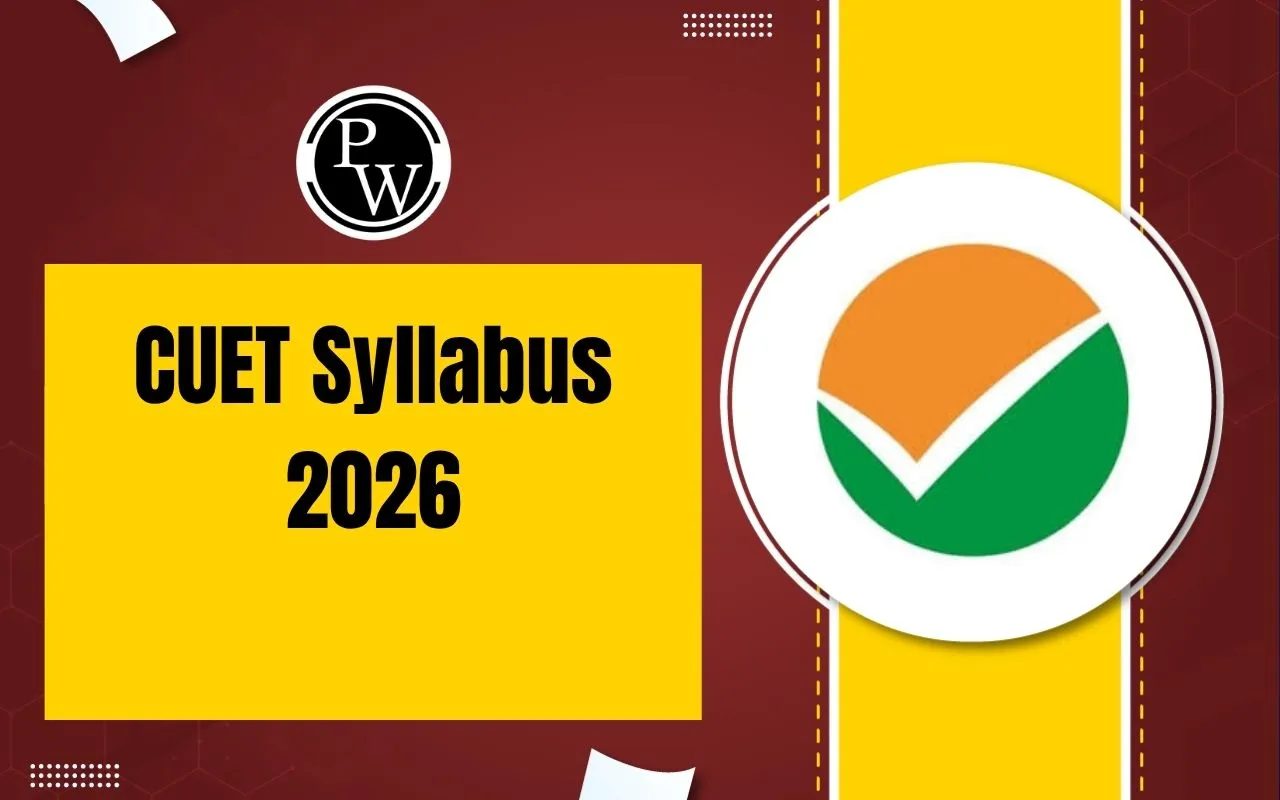
CUET Syllabus 2026 for UG helps students understand what to prepare for the Common University Entrance Test (CUET), which is conducted by the National Testing Agency (NTA) for admission to central and other CUET participating universities across India. This CUET exam syllabus is important for students to strategize effectively. There is a common question among students: "What is the CUET syllabus 2026 for science students? The scientific syllabus covers topics including biology, chemistry, physics, and mathematics. Below, we go over the CUET 2026 syllabus PCB (Physics, Chemistry, Biology).
Students can choose up to five subjects from three sections, including Languages, Domain-Specific Subjects, and the General Test. Although the official syllabus is “yet to be released", it is expected to remain similar to the CUET syllabus 2025, which is based on the NCERT Class 12 curriculum for domain subjects. This gives students from Science, Commerce, and Arts streams a clear path to start their preparation. A clear understanding of the CUET UG 2026 syllabus and its section-wise syllabus, key topics, and a focused study plan can help students approach the exam with confidence and efficiency.
CUET Syllabus 2026 Overview
CUET UG 2026, conducted by the National Testing Agency (NTA), is used for undergraduate admissions to many top central and CUET participating universities such as Delhi University (DU), Banaras Hindu University (BHU), Jawaharlal Nehru University (JNU), and Jamia Millia Islamia (JMI). The CUET UG 2026 syllabus is the same for all candidates and is divided into three key sections:
|
CUET Syllabus 2026 Overview |
|
|
Sections |
CUET 2026 Syllabus Details |
|
Language Papers |
Reading Comprehension (based on Factual, Literary, and Narrative passages), Literary Aptitude, Vocabulary, and Verbal Ability |
|
Domain Subjects |
Based entirely on the Class 12 NCERT syllabus for each subject |
|
General Test |
Includes General Knowledge, Current Affairs, General Mental Ability, Numerical Ability, and Quantitative Reasoning (Arithmetic, Algebra, Geometry, Mensuration, Statistics), along with Logical and Analytical Reasoning |
CUET Syllabus 2026 Stream & Subject-wise
CUET UG 2026 exam aims to assess students' understanding and aptitude in their chosen academic domains. Section II, which focuses on domain-specific subjects, follows the NCERT Class 12 syllabus.
CUET 2026 Syllabus for Humanities / Arts Students
This is the CUET syllabus 2026 for humanities students, we include domain topics like History, Political Science, Sociology, etc Arts/Humanities stream remains a popular choice for CUET aspirants. Below is the detailed subject-wise CUET syllabus 2026 for key Humanities disciplines.
CUET Geography Syllabus
CUET Geography syllabus is divided into two major units, each containing five chapters:
-
Unit 1: Fundamentals of Human Geography
-
Human Geography: Nature and Scope
-
People
-
Human Activities
-
Transport, Communication, and Trade
-
Human Settlements
-
Unit 2: India: People and Economy
-
People
-
Human Settlements
-
Resources and Development
-
Transport, Communication, and International Trade
-
Geographical Perspective on Selected Issues and Problems
CUET History Syllabus
CUET History syllabus includes 15 topics, covering ancient, medieval, and modern India:
-
The Story of the First Cities: Harappan Archaeology
-
Political and Economic History: How Inscriptions tell a story
-
Social Histories using the Mahabharata
-
A History of Buddhism: Sanchi Stupa
-
Medieval Society through Travellers’ Accounts
-
Religious Histories: The Bhakti-Sufi Tradition
-
New Architecture: Hampi
-
Agrarian Relations: The Ain-i-Akbari
-
The Mughal Court: Reconstructing Histories through Chronicles
-
Colonialism and Rural Society: Official Report
-
Representations of 1857
-
Colonialism and Indian Towns: Town Plans and Reports
-
Mahatma Gandhi Through Contemporary Eyes
-
Partition through Oral Sources
-
The Making of the Constitution
CUET Political Science Syllabus
The CUET syllabus is categorized into two comprehensive units:
Unit I: Politics in India Since Independence
-
-
One-Party Dominance
-
Nation-Building and Its Problems
-
Politics of Planned Development
-
India’s External Relations
-
Challenge to and Restoration of the Congress System
-
Crisis of the Constitutional Order
-
Regional Aspirations and Conflicts
-
Rise of New Social Movements
-
Democratic Upsurge and Coalition Politics
-
Recent Issues and Challenges
-
Unit II: Contemporary World Politics
-
-
Cold War Era
-
Disintegration of the Second World
-
US Dominance in World Politics
-
Alternative Economic and Political Power Centers
-
South Asia Post-Cold War
-
International Organisations
-
Global Security
-
Environmental Politics
-
Globalization and Its Critics
-
CUET Psychology Syllabus
The CUET Psychology syllabus covers 9 chapters:
-
Variations in Psychological Attributes
-
Self and Personality
-
Meeting Life Challenges
-
Psychological Disorders
-
Therapeutic Approaches
-
Attitude and Social Cognition
-
Social Influence and Group Processes
-
Psychology and Life
-
Developing Psychological Skills
CUET Sociology Syllabus
The CUET Sociology syllabus is made up of 10 chapters:
-
Structure of Indian Society
-
Social Institutions: Continuity and Change
-
Social Inequality and Exclusion
-
The Challenges of Unity in Diversity
-
Process of Social Change in India
-
Social Change and the Polity
-
Social Change and the Economy
-
Arenas of Social Change
-
New Arenas of Social Change
-
Social Movements
CUET Syllabus 2026 for Commerce Students
Commerce stream is a preferred choice among students aiming to pursue undergraduate courses in business, economics, accountancy, and related fields. To perform well in the CUET UG 2026 exam, aspirants must thoroughly understand the subject-wise syllabus for CUET Commerce-related domains, as most questions are based on NCERT Class12 Syllabus.
Below is the CUET syllabus 2026 for commerce students, covering Economics, Accountancy, Business Studies, etc
CUET Accountancy Syllabus
CUET Accountancy syllabus is divided into three broad units, each targeting specific areas of financial recording and analysis:
-
Accounting for Not-for-Profit Organizations and Partnership Firms
-
Fundamentals of partnership
-
Goodwill treatment
-
Reconstitution (retirement, admission, death of a partner)
-
Dissolution of a partnership firm
-
Accounting for not-for-profit organizations
-
Company Accounts and Financial Statement Analysis
-
Accounting for share capital and debentures
-
Financial statements of companies
-
Analysis of financial statements
-
Tools for financial analysis (comparative and common size statements, ratio analysis, cash flow statement)
-
Computerized Accounting System
-
Introduction to accounting information system
-
Applications of computers in accounting
-
Database management systems for accounting
CUET Business Studies Syllabus
The CUET Business Studies syllabus consists of two major units, encompassing 13 chapters in total:
Unit I: Principles and Functions of Management
-
-
Nature and significance of management
-
Principles of management
-
Business environment
-
Planning
-
Organizing
-
Staffing
-
Directing
-
Controlling
-
Unit II: Business Finance and Marketing
-
-
Business finance
-
Financial market
-
Marketing management
-
Consumer protection
-
Entrepreneurship development
-
CUET Economics Syllabus
The CUET Economics syllabus covers a wide range of macroeconomic and microeconomic concepts and issues. It is divided into 10 key units:
-
Introduction to Microeconomics
-
Consumer Behaviour and Demand
-
National Income and Related Aggregates – Basic Concepts and Measurement
-
Determination of Income and Employment
-
Money and Banking
-
Government Budget and the Economy
-
Balance of Payments
-
Development Experience (1947–90) and Economic Reforms Since 1991
-
Current Challenges Facing the Indian Economy
-
Development Experience in India – A Comparative Study
CUET UG Syllabus 2026 for Science Students (PCM / PCB)
For students aspiring to pursue undergraduate programs in science through CUET UG, it is essential to understand the CUET Science syllabus of core science subjects. Questions are primarily based on NCERT Class 12 Syllabus. Student can find the full CUET UG syllabus 2026 for science students, including CUET syllabus 2026 for science (PCB and PCM). We also list CUET 2026 physics syllabus in detail.
CUET Biology Syllabus
The CUET Biology syllabus is compact and includes 5 units, covering fundamental and applied concepts of life sciences:
-
Reproduction
-
Genetics & Evolution
-
Biology and Human Welfare
-
Biotechnology and Its Applications
-
Ecology and Environment
CUET Chemistry Syllabus
The CUET Chemistry syllabus is more comprehensive, covering 16 chapters, and includes both physical and organic chemistry topics:
-
Solid State
-
Solutions
-
Electrochemistry
-
Chemical Kinetics
-
Surface Chemistry
-
General Principles and Processes of Isolation of Elements
-
p-Block Elements
-
d- and f-Block Elements
-
Coordination Compounds
-
Haloalkanes and Haloarenes
-
Alcohols, Phenols, and Ethers
-
Aldehydes, Ketones, and Carboxylic Acids
-
Organic Compounds Containing Nitrogen
-
Biomolecules
-
Polymers
-
Chemistry in Everyday Life
CUET Mathematics Syllabus
The CUET Mathematics syllabus is categorized into three parts: a compulsory section and two optional branches—Core Maths and Applied Maths.
Section 1: Compulsory
-
Algebra
-
Calculus
-
Integration and its Applications
-
Differential Equations
-
Probability Distributions
-
Linear Programming
Section B1: Core Maths
-
Relations and Functions
-
Algebra
-
Calculus
-
Vectors and Three-Dimensional Geometry
-
Linear Programming
-
Probability
Section B2: Applied Maths
-
Numbers, Quantification, and Numerical Applications
-
Algebra
-
Calculus
-
Probability Distributions
-
Index Numbers and Time-based Data
-
Financial Mathematics
-
Linear Programming
CUET Physics Syllabus
The CUET Physics syllabus includes 10 key chapters that span both theoretical and applied physics topics:
-
Electrostatics
-
Current Electricity
-
Magnetic Effects of Current and Magnetism
-
Electromagnetic Induction and Alternating Current
-
Electromagnetic Waves
-
Optics
-
Dual Nature of Matter and Radiation
-
Atoms and Nuclei
-
Electronic Devices
-
Communication Systems
CUET Syllabus PDF Download Links
Students aiming to appear for CUET UG 2026 can access the subject-wise CUET syllabus PDFs provided below. Although the official CUET 2026 syllabus has not been released, the exam pattern and subject content are expected to remain similar to the previous year. Therefore, referring to the CUET 2025 syllabus PDFs will help students begin their preparation in the right direction and understand the key topics for each subject.
|
CUET Syllabus PDF Download Link |
|||
|
S.No. |
Subject Code |
Subject Name |
Subject Specification |
|
1 |
101 |
Language |
|
|
2 |
102 |
Language |
|
|
3 |
103 |
Language |
|
|
4 |
104 |
Language |
|
|
5 |
105 |
Language |
|
|
6 |
106 |
Language |
|
|
7 |
107 |
Language |
|
|
8 |
108 |
Language |
|
|
9 |
109 |
Language |
|
|
10 |
110 |
Language |
|
|
11 |
111 |
Language |
|
|
12 |
112 |
Language |
|
|
13 |
113 |
Language |
|
|
14 |
301 |
Domain |
|
|
15 |
302 |
Domain |
|
|
16 |
303 |
Domain |
|
|
17 |
304 |
Domain |
|
|
18 |
305 |
Domain |
|
|
19 |
306 |
Domain |
|
|
20 |
307 |
Domain |
|
|
21 |
308 |
Domain |
|
|
22 |
309 |
Domain |
|
|
23 |
312 |
Domain |
|
|
24 |
313 |
Domain |
|
|
25 |
314 |
Domain |
|
|
26 |
315 |
Domain |
|
|
27 |
316 |
Domain |
|
|
28 |
318 |
Domain |
|
|
29 |
319 |
Domain |
|
|
30 |
320 |
Domain |
|
|
31 |
321 |
Domain |
|
|
32 |
322 |
Domain |
|
|
33 |
323 |
Domain |
|
|
34 |
324 |
Domain |
|
|
35 |
325 |
Domain |
|
|
36 |
326 |
Domain |
|
|
37 |
501 |
Aptitude Test |
|
Section-wise CUET 2026 Syllabus
CUET UG 2026 exam is divided into three key sections: Language, Domain-Specific Subjects, and the General Aptitude Test (GAT). Here's an overview of the section-wise syllabus to help students plan their preparation strategically:
|
Section-wise CUET 2026 Syllabus |
||
|
Sections |
Description |
Details |
|
Section I A |
Language (13 languages) |
Reading Comprehension (RC), Grammar, Vocabulary, Books & Authors, etc. |
|
Section II |
Domain-Specific Subjects (23 total) |
Complete NCERT Class 12 syllabus for respective subjects |
|
Section III |
General Aptitude Test (GAT) |
General Knowledge, Current Affairs, Mental Ability, Numerical Ability, Quantitative Aptitude, Logical and Analytical Reasoning |
CUET 2026 Syllabus for Section I Languages
Section I tests a student's proficiency in their selected language(s) through reading comprehension and language-based questions. The languages offered include both Indian and foreign languages. Students can choose up to three languages from this section.
Languages Offered (Total: 13 Common Languages in Section IA):
-
English
-
Hindi
-
Assamese
-
Bengali
-
Gujarati
-
Kannada
-
Malayalam
-
Marathi
-
Odia
-
Punjabi
-
Tami
-
Telugu
-
Urdu
CUET 2026 Syllabus for Language Papers (Applicable to All Languages)
Here is the detailed CUET Syllabus 2026 for language paper to help you plan your preparation effectively. Students can refer to this CUET Exam syllabus to understand the topics covered in each section.
|
CUET 2026 Syllabus for Section I Languages |
|
|
Topic |
Details |
|
Reading Comprehension (RC) |
Based on factual, literary, narrative passages, and poems |
|
Vocabulary |
Synonyms, antonyms, one-word substitution |
|
Grammar Usage |
Error detection, sentence correction, fill in the blanks |
|
Verbal Ability |
Rearranging words/sentences, sentence formation |
|
Literary Aptitude |
Understanding literary devices, tone, and intent |
|
Books and Authors |
Questions related to notable works and their authors |
CUET Syllabus 2026 Section II – Domain-Specific Subjects
Section II includes 23 subjects divided into Core Domain Subjects and Additional Subjects. The syllabus for all these subjects is based entirely on the NCERT Class 12 syllabus. Students are advised to refer to their NCERT textbooks for preparation. Here is the List of Domain-Specific Subjects in CUET 2026:
|
CUET Syllabus 2026 Section II – Domain-Specific Subjects |
|
|
Core Domain Subjects |
Additional Subjects |
|
Accountancy |
Physical Education |
|
Biology |
Fine Arts |
|
Business Studies |
Knowledge Traditions and Practices in India |
|
Chemistry |
Mass Media |
|
Computer Science |
Agriculture |
|
Economics |
|
|
Geography |
|
|
History |
|
|
Home Science |
|
|
Mathematics |
|
|
Physics |
|
|
Political Science |
|
|
Psychology |
|
|
Sociology |
|
|
Physical Education (also appears in Additional) |
|
|
Environmental Studies |
|
|
Anthropology |
|
CUET UG Syllabus 2026 Section III – (General Aptitude Test)
CUET GAT Syllabus 2026 (General Aptitude Test) Section III is designed for UG courses that do not require a specific domain subject or language. In such cases, admission will be based entirely on the GAT score, making this section extremely important for many aspirants. Here are the topics covered in CUET general test syllabus 2026:
|
CUET UG Syllabus 2026 Section III – General Aptitude Test (GAT) |
|
|
Topic Area |
Subtopics |
|
General Knowledge |
Static GK, important organizations, Indian history & culture, geography |
|
Current Affairs |
Recent events (national & international), government schemes, awards |
|
General Mental Ability |
Series, patterns, classification, analogy |
|
Numerical Ability |
Simplification, number series, averages, percentages, profit & loss |
|
Quantitative Reasoning |
Basic arithmetic, algebra, geometry, mensuration, and statistics |
|
Logical & Analytical Reasoning |
Syllogism, puzzles, seating arrangement, blood relations, coding-decoding |
CUET Syllabus 2026 Preparation for General Test (CUET GAT)
CUET General Test syllabus 2026 includes sections like General Knowledge, Current Affairs, Numerical Ability, Logical Reasoning, and General Mental Ability. To prepare effectively, candidates should practice mock tests and solve CUET GAT previous years papers within a set time limit. Understanding CUET UG syllabus 2026 for the General Test is crucial for non-subject-specific questions, especially for students from diverse academic backgrounds. Regular practice and revision as per the CUET GAT syllabus 2026 can significantly enhance your overall score in the exam.
CUET 2026 Syllabus Additional Subjects
Students can opt for these additional subjects along with core CUET domain subjects while filling out the CUET UG application form:
|
CUET 2026 Syllabus Additional Subjects |
|
|
Additional Subject |
Syllabus Coverage |
|
Physical Education |
NCERT Class 12 syllabus including physical fitness, health, sports psychology, etc. |
|
Fine Arts (Painting, Sculpture, Graphics) |
Basics of art, principles of design, Indian art history, techniques, and materials |
|
Mass Media / Media Studies |
Understanding media, media ethics, TV, film, advertising, print & digital media |
|
Agriculture |
Crop production, soil science, horticulture, animal husbandry, and agri-business |
|
Knowledge Traditions and Practices in India |
Ancient knowledge systems, Vedic texts, Ayurveda, architecture, and philosophy |
Benefits of Understanding CUET Syllabus 2026
Understanding the CUET exam syllabus is important for every aspirant preparing for CUET entrance exam. It helps in creating a structured preparation strategy and avoiding irrelevant topics.
A thorough understanding of the syllabus of CUET 2026 provides students clarity about what to study, the importance of various sections, and the structure of the exam. This ultimately increases confidence and performance on exam day. By following the CUET UG 2026 syllabus, students can prioritize important topics, manage their time better, and improve their overall revision strategy.
CUET 2026 Exam Pattern
To better understand the CUET 2026 syllabus, learn how many domain subjects (up to 5), mandatory language papers, and the CUET GAT syllabus 2026 come together in the final CUET exam pattern structure. CUET 2026 will be conducted in online mode with objective-type (MCQ) questions.
|
CUET 2026 Exam Pattern |
||||
|
Section |
Subjects |
Maximum Questions |
To be Answered |
Time Duration |
|
Section I |
13 Languages (incl. English & Hindi) |
50 |
50 |
60 minutes per language |
|
Section II |
23 Domain-Specific Subjects |
50 |
50 |
60 minutes per subject |
|
Section III |
General Aptitude Test (GAT) |
50 |
50 |
60 minutes |
CUET Syllabus 2026 Preparation Tips
CUET UG is a national-level entrance exam for admission to 217 participating universities across India. With nearly 15 lakh students registering each year, cracking CUET requires smart preparation and a strategic approach. Here are some effective CUET exam syllabus 2026 preparation tips to help you succeed:
-
Know what to study by going through the complete subject-wise syllabus.
-
Familiarize yourself with the CUET structure, question types, and marking scheme.
Use Class 12 NCERT books as the primary source for domain subjects. -
Plan your study hours wisely, giving time to each section and regular revisions.
-
Study regularly, revise frequently, and assess your performance weekly.
-
Practice with CUET PYQs to understand the trends and difficulty levels.
-
Strengthen your time management and accuracy by simulating real exam conditions.
-
Confidence, mental clarity, and staying stress-free play a big role in your success.
Physics Wallah provides CUET UG Online Coaching with live classes, study materials, and practice tests. The courses are designed to make learning simple and effective, helping you prepare for your CUET UG exams with ease.
|
CUET UG Exam Important Links |
|
CUET Syllabus 2026 FAQs
Has the CUET Syllabus 2026 been released?
Where can I download CUET 2026 syllabus PDF subject-wise?
Are there differences in the CUET syllabus 2026 for commerce students?
What is the CUET UG syllabus 2026 for science students (PCB / PCM)?
Can I start preparation using the CUET syllabus 2026?

